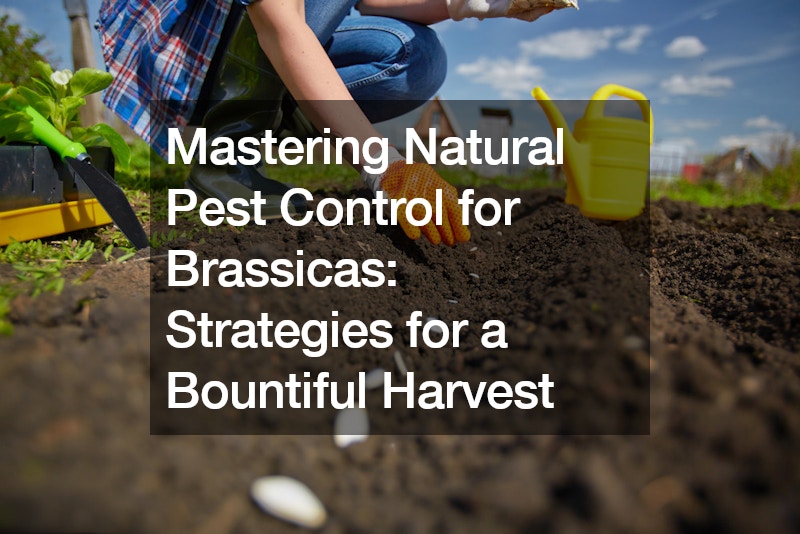In the tranquil realm of garden sanctuaries, brassicas stand as beacons of health and vitality, promising bountiful harvests of nutrient-rich greens. Yet, the journey from seedling to harvest is fraught with challenges, chief among them being the relentless assault of pests eager to plunder these prized crops. However, armed with knowledge and a repertoire of natural pest control techniques, gardeners can safeguard their brassicas and ensure a thriving harvest without resorting to harmful chemicals.
Brassicas, encompassing cabbage, kale, broccoli, and their kin, are notorious targets for an array of pests, from ravenous caterpillars to marauding wood pigeons.
These pests, if left unchecked, can wreak havoc on tender brassica leaves, leaving behind a trail of devastation. To combat this threat, gardeners must employ proactive measures that discourage pests while nurturing the health and vitality of their brassica plants.
One of the most common pests afflicting brassicas is the caterpillar, particularly the larvae of butterflies such as the cabbage white and moths like the diamondback moth. These voracious feeders can decimate young brassica plants, leaving them mere shadows of their former selves. Preventing caterpillar infestations requires early intervention and diligent monitoring. Natural predators such as ladybugs can be enlisted to patrol brassica patches, preying on caterpillars and keeping their populations in check.
Wood pigeons pose another significant threat to brassicas, tearing at leaves and causing extensive damage, especially during the winter months. To deter these avian intruders, gardeners can employ physical barriers such as netting or covers to shield brassica crops from aerial assaults. By fortifying brassica beds with protective barriers, gardeners can thwart the advances of wood pigeons and safeguard their precious crops.
In addition to caterpillars and wood pigeons, brassicas may also fall prey to sap-sucking insects like cabbage aphids and whiteflies, which can quickly infest plants and weaken their vitality. To deter these pests, gardeners can harness the power of aromatic herbs and flowers, such as mint, marigolds, and thyme, whose strong scents confuse and repel insects. Planting these companion plants alongside brassicas creates a natural barrier that wards off pests while enhancing the overall health of the garden ecosystem.
Another common pest that afflicts brassicas is the cabbage root maggot, which lays its eggs at the base of plants, leading to root damage and wilting. Gardeners can preemptively protect brassica roots by creating physical barriers using cardboard, stiff paper, or commercial root collars. These barriers prevent female flies from laying eggs at the base of plants, effectively thwarting the lifecycle of cabbage root maggots and preserving the health of brassica crops.
While preventive measures are essential for managing pest populations, gardeners must also remain vigilant in monitoring brassica patches for signs of infestation. Regular inspections allow for early detection of pests, enabling prompt intervention before populations spiral out of control. If infestations occur, gardeners can employ mechanical methods such as hand-picking caterpillars or spraying plants with a solution of bacillus thuringiensis (BT), a naturally occurring soil bacterium that targets caterpillars while sparing beneficial insects.
Sacrificial planting, wherein certain plants are intentionally cultivated to attract pests away from main crops, can also be an effective pest management strategy for brassicas. Nasturtiums, collards, and other sacrificial plants serve as decoys, luring pests like cabbage worms away from brassicas and onto alternate hosts. Once infested, sacrificial plants can be removed and disposed of, effectively breaking the pest lifecycle and preserving the health of brassica crops.
Physical covers and barriers play a crucial role in protecting brassicas from pests throughout their growth cycle. Butterfly netting, scaffold netting, and nylon insect mesh provide reliable defenses against airborne pests like butterflies and birds, while allowing sunlight and moisture to reach plants unhindered. Proper installation and maintenance of covers are essential to prevent gaps and tears that pests could exploit to access brassica crops.
In conclusion, mastering natural pest control for brassicas is essential for ensuring a bountiful harvest of these prized vegetables. By employing a combination of preventive measures, mechanical interventions, and physical barriers, gardeners can effectively manage pest populations while fostering the health and vitality of their brassica crops. With diligence, patience, and a commitment to sustainable gardening practices, brassica enthusiasts can overcome the challenges posed by pests and enjoy the fruits of their labor in abundance.
.

